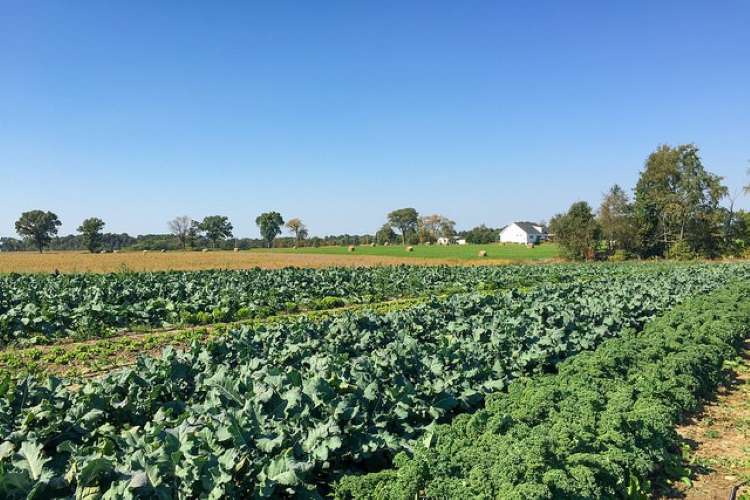
When the Pradhan Mantri Fasal Bima Yojana (PMFBY) was launched in 2016, it promised to transform the way Indian farmers managed risk. Subsidised premiums—set at 2% for kharif crops, 1.5% for rabi, and 5% for commercial and horticultural crops—made insurance affordable, especially for small and marginal farmers. The idea was sound: protect farmers from climate volatility, pests, and disease, while spreading the cost of risk across a large, national pool. Nearly a decade later, the scheme continues to operate but falls well short of its ambitions.
To its credit, PMFBY has delivered results where it has functioned as intended. By 2020, it covered around 30% of India’s total sown area. Farmers paid ₹13,000 crore in premiums and received claim payouts worth ₹60,000 crore—a significant return. According to government data, of the ₹1.67 lakh crore in reported claims since inception, ₹1.63 lakh crore—or 98%—have been settled. In states such as Maharashtra, Bihar, and Odisha, farmers have received timely compensation for losses caused by floods, droughts, and unseasonal rainfall.
READ | Rethinking energy security in a net-zero world
Yet the scheme’s reach has stagnated. Of the 80 million farmers actively engaged in cultivation, a far smaller number are covered under PMFBY. Insurance companies admit that crop insurance remains a complex business, and universal participation is difficult to achieve. The core idea of risk pooling falters when participation is skewed—only those who expect losses are signing up.
States opting out
One of the biggest structural challenges is uneven state participation. Punjab never adopted the scheme. West Bengal and Bihar exited early, opting for their own models. Others, like Gujarat and Andhra Pradesh, have opted out intermittently, citing high fiscal burden and low returns in normal rainfall years. Even Maharashtra—one of the early adopters—has called the scheme’s benefits “overwhelmingly negative” and is reportedly considering withdrawal.
Such decisions often stem from financial pressures. States are required to pay a share of the subsidy alongside the Centre, and this cost becomes harder to justify when claims are low. Without guaranteed annual returns, many states prefer alternative arrangements.
Bureaucratic gaps and fraud
In some regions, the scheme exists only on paper. In Jammu & Kashmir, tenders have failed to attract insurers, leaving key horticultural areas without coverage. Farmers growing apples and other fruits remain unprotected against hailstorms and untimely snowfall—risks that are both frequent and financially devastating.
Fraud has further eroded credibility. In Maharashtra’s Nanded district, an investigation revealed that 40 Common Service Centre (CSC) operators filed over 4,400 bogus claims during the kharif 2024 season using fake documents. In Rajasthan, there are reports of fraudulent claims filed without farmers’ knowledge, with allegations of collusion between intermediaries and insurance firms. The Centre, which had experimented with a token ₹1-premium model, reverted to the original structure in April 2025 in a bid to restore integrity.
In January 2025, the Union Cabinet allocated ₹69,515 crore to bolster the scheme. An additional ₹800 crore was set aside under the Fund for Innovation and Technology (FIAT), meant to introduce digital monitoring tools and weather-based early warning systems. However, technological upgrades have not yet translated into tangible improvements in trust or efficiency. States and insurance providers continue to voice concern over procedural delays and inconsistent data quality.
PMFBY: The case for a national model
There is growing consensus that the scheme’s design needs rethinking. Lavanya R Mundayur, Chairman and Managing Director of the Agriculture Insurance Company of India, has argued for a single national framework offering basic crop insurance, with states adding features tailored to local needs. This would help build economies of scale, diversify risk, and reduce premium costs. If the Centre were to increase its share of the subsidy—from the current 50% to 70-80%—more states might find it worthwhile to remain within the fold.
In its present form, the scheme suffers from adverse selection. Only those who anticipate making claims are enrolling. A truly effective insurance model requires wider participation. Making the scheme mandatory—or nearly universal—with lower pricing could help broaden the risk pool and drive down per-farmer premiums.
Global practices, local lessons
India could also look to international models for guidance. In the United States, crop insurance rates are set by an independent entity using actuarial models that factor in historical losses and burn costs. Such a neutral pricing mechanism could be adapted to Indian conditions, helping to depoliticise rate-setting and make the scheme more sustainable.
Tax policy is another area needing correction. While PMFBY premiums are tax-exempt, other rural insurance products continue to attract an 18% GST. The Insurance Regulatory and Development Authority (IRDAI) mandates rural penetration targets for insurers, but such targets are harder to achieve when products remain expensive due to taxation. Rationalising GST for rural insurance would improve adoption and reduce the protection gap.
PMFBY began as a well-intentioned effort to make Indian agriculture more resilient to shocks. Its weaknesses lie less in concept than in execution. Fragmented implementation, weak monitoring, and lack of uniform participation have reduced it to a partial safety net. If India is serious about protecting its farmers from climate risk and income volatility, it must redesign the scheme to be simpler, more transparent, and nationally integrated. That would be a better use of taxpayer money—and a more meaningful safety net for the country’s food producers.
